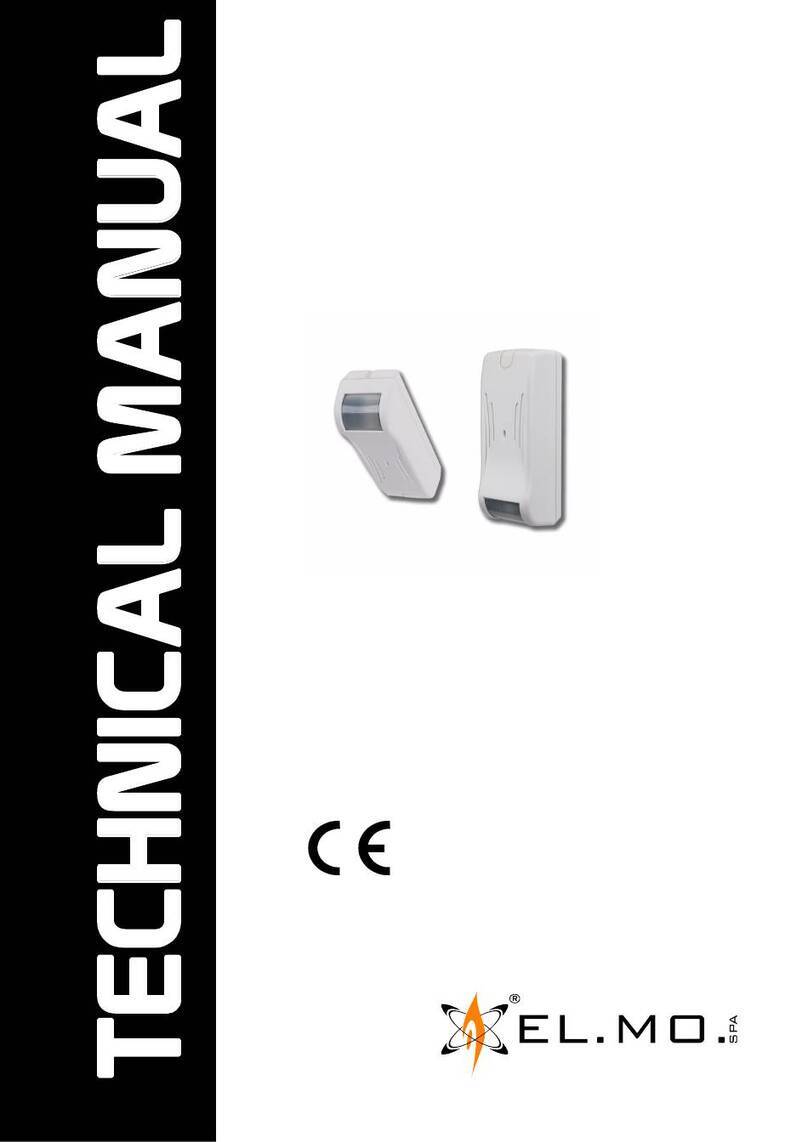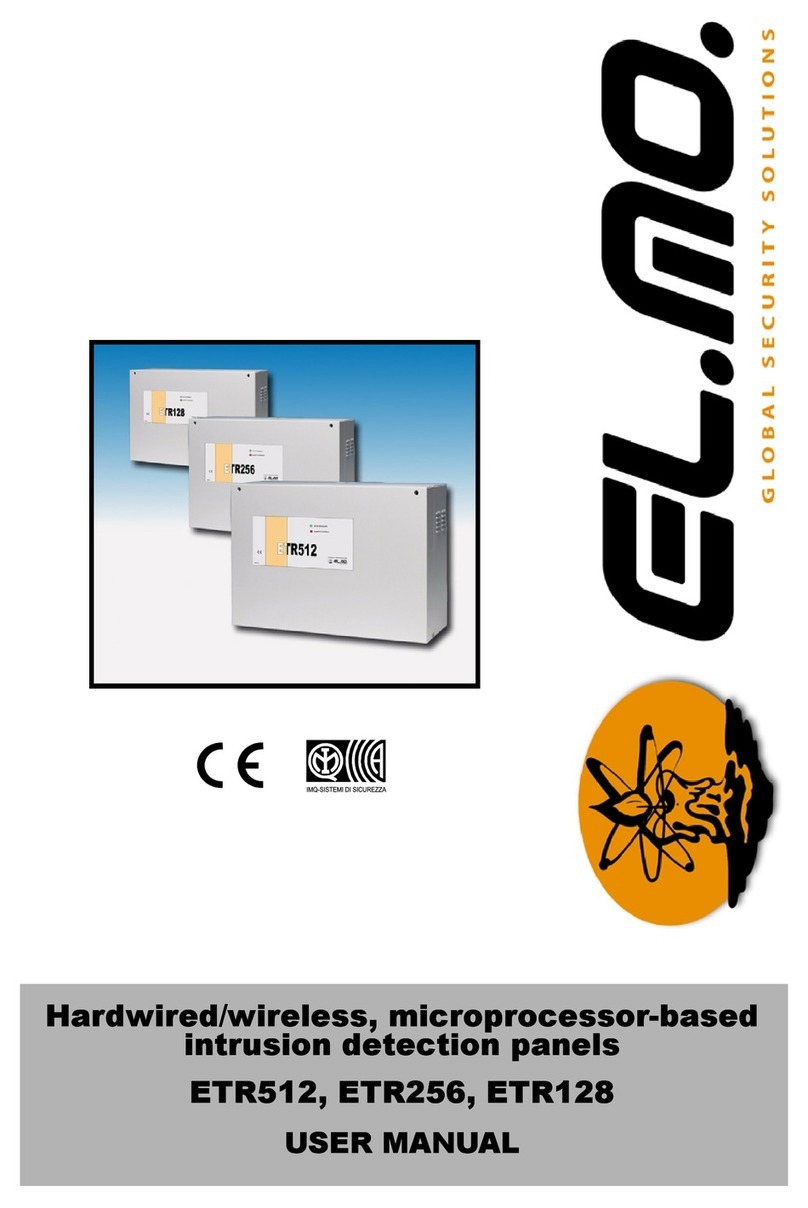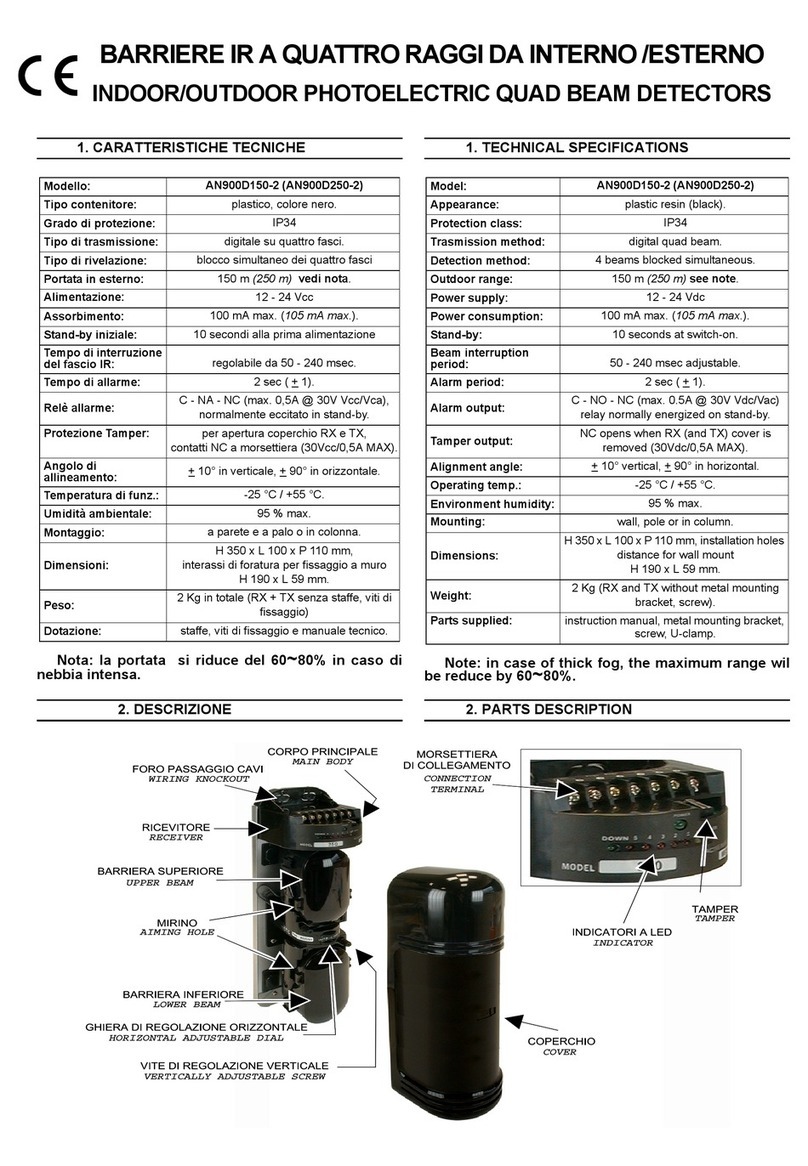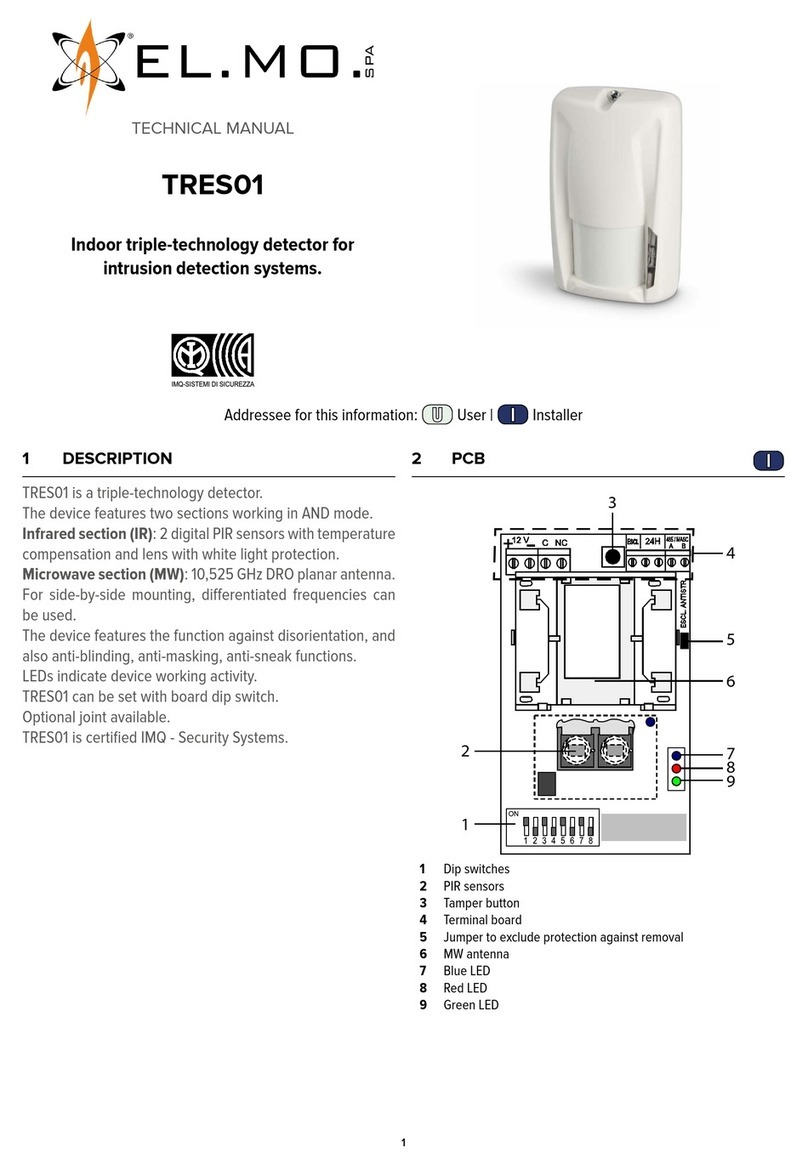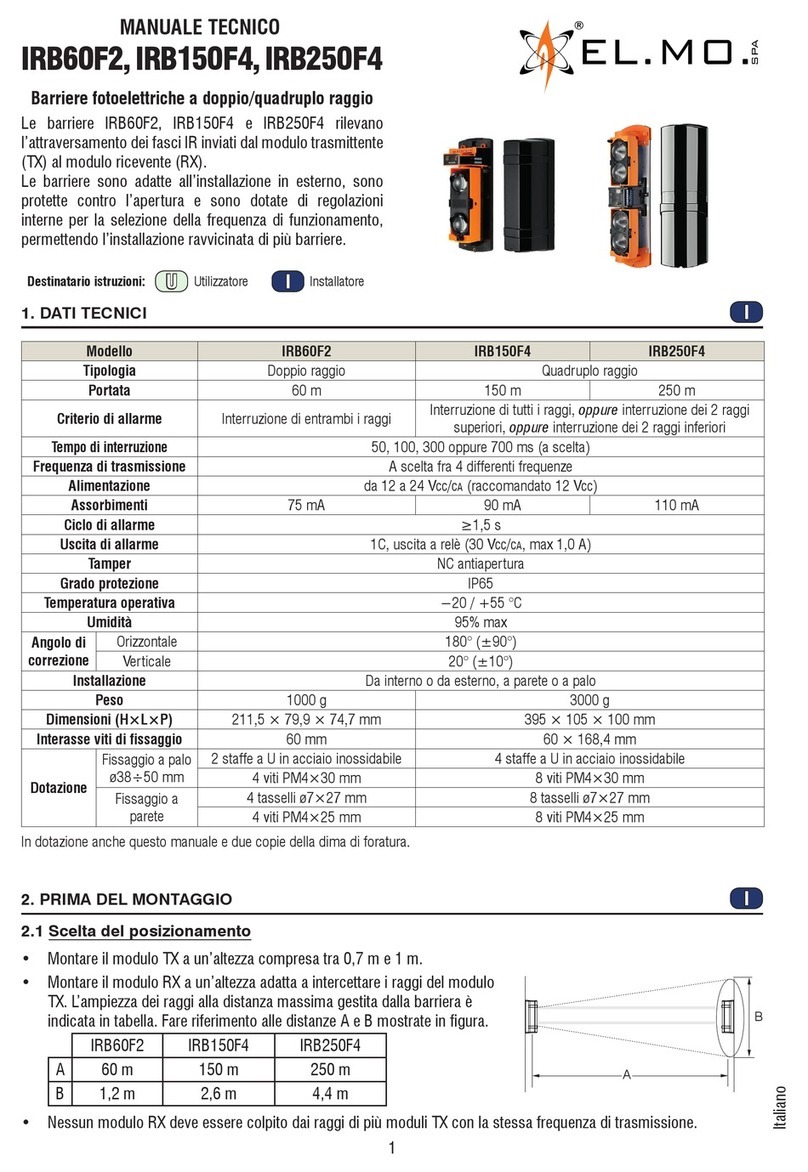
MANUALE TECNICO - Edizione Ottobre 2017 - Rev. Novembre 2017 090001075
TECHNICAL MANUAL - October 2017 edition - November 2017 rev.
Le informazioni e le caratteristiche di prodotto non sono impegnative e potranno essere modicate senza preavviso.
The information and product features herein are not binding and may be changed without prior notice.
EL.MO. SpA Via Pontarola, 70 - 35011 Campodarsego (PD) - Italy
T
el.+390499203333-F
ax+390499200306-T
echnicalAss.+390499200426-elmospa.com-
[email protected]English
9. EU DECLARATION OF CONFORMITY
The product complies with current European
EMC and LVD directives.
The full text of the EU Declaration of Conformity
is available at the following internet address:
elmospa.com
—
registration is quick and easy.
10. WARNINGS
10.1 Warnings for the installer
- Comply strictly with current standards governing the installation
of electrical systems and security systems, and with the
manufacturer’s directions given in the manuals supplied with
the products.
- Provide the user with full information on using the system
installed and on its limitations, pointing out that there are
different levels of security performance that will need to suit
the user’s requirements within the constraints of the specific
applicable standards. See that the user looks through the
warnings given herein.
- Work involved in the design, installation and maintenance of
systems incorporating this product should be performed only
by personnel with suitable skills and knowledge required to
work safely so as to prevent any accidents. It is vital that
systems be installed in accordance with current legislation. The
internal parts of certain equipment are connected to the mains
and therefore there is a risk of electrocution when maintenance
work is performed inside without first disconnecting the
primary and emergency power supplies. Certain products
include batteries, rechargeable or otherwise, as an emergency
backup power supply. If connected incorrectly, they may cause
damage to the product or property, and may endanger the
operator (explosion and fire).
10.2 Warnings for the user
- Check the system’s operation thoroughly at regular intervals,
making sure the equipment can be armed and disarmed
properly.
- Make sure the system receives proper routine maintenance,
employing the services of specialist personnel who meet the
requirements prescribed by current regulations.
- Ask your installer to check that the system suits changing
operating conditions (e.g. changes in the extent of the areas to
be protected, change in access methods, etc...)
.
10.3 General warnings
This device has been designed, built and tested with the utmost
care and attention, adopting test and inspection procedures
in accordance with current legislation. Full compliance of the
working specifications is only achieved in the event the device
is used solely for its intended purpose, namely:
Photoelectric dual/quad beam detector
The device is not intended for any use other than the above and
hence its correct functioning in such cases cannot be assured.
Consequently, any use of the manual in your possession for any
purpose other than those for which it was compiled—namely for
the purpose of explaining the product’s technical features and
operating procedures—is strictly prohibited.
Production processes are closely monitored in order to prevent
faults and malfunctions. However, the componentry adopted is
subject to an extremely modest percentage of faults, which is
nonetheless the case with any electronic or mechanical product.
Given the intended use of this item (protection of property and
people), we invite you to adapt the level of protection offered by
the system to suit the actual situation of risk (allowing for the
possibility of impaired system operation due to faults or other
problems), while reminding you that there are specific standards
for the design and production of systems intended for this kind of
application.
We hereby advise you (the system’s operator) to see that
the system receives regular routine maintenance, at least in
accordance with the provisions of current legislation, and also
check on as regular a basis as the risk involved requires that
the system in question is operating properly, with particular
reference to the control unit, sensors, sounders, dialler(s) and
any other device connected. You must let the installer know
how well the system seems to be operating, based on the
results of periodic checks, without delay.
Work involved in the design, installation and maintenance of
systems incorporating this product should be performed only by
personnel with suitable skills and knowledge required to work safely
so as to prevent any accidents. It is vital that systems be installed
in accordance with current legislation. The internal parts of certain
equipment are connected to the mains and therefore there is a risk
of electrocution when maintenance work is performed inside without
first disconnecting the primary and emergency power supplies.
Certain products include batteries, rechargeable or otherwise, as an
emergency backup power supply. If connected incorrectly, they may
cause damage to the product or property, and may endanger the
operator (explosion and fire).
10.4 Basic safety rules
- It is forbidden for the appliance to be used by children or
unassisted disabled persons.
- It is forbidden to touch the appliance with wet hands or body
when barefoot, or to splash or throw water directly on it.
- It is forbidden to pull, detach or twist any protruding electrical
wires, even if the appliance is disconnected from power supply
mains.
10.5 Disposal instructions
In accordance with Directive
2012/19/EU on waste electrical and
electronic equipment (WEEE), please
be advised that the EEE was placed
on the market after 13th August 2005
and must be disposed of separately
from normal household waste.
IT08020000001624






